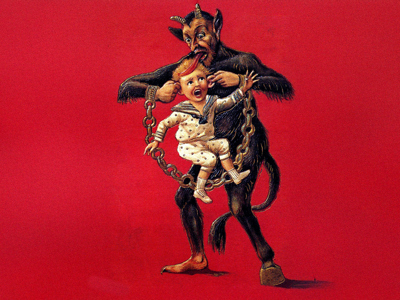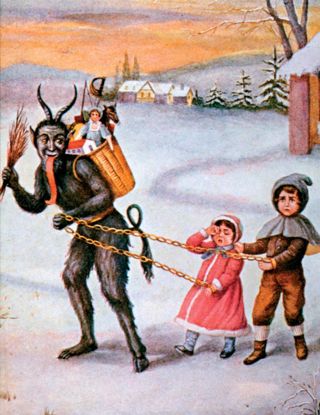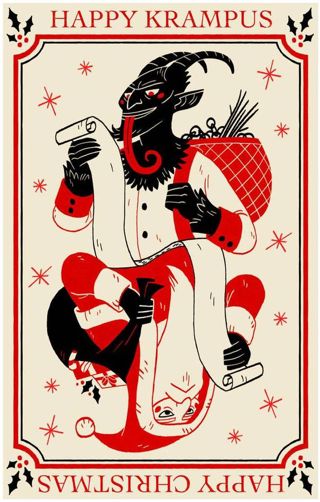
The History & Origins of Krampus
5th Dec 2022
It was the night before the feast of St Nicholas and children are leaving their shoes outside in hopes that upon waking, they will find sweets and presents.
But some children go to sleep that night with dread in their hearts because tonight is Krampusnacht and tonight the Krampus will roam the streets in search of all those wicked children who need punishment.
It’s hard to imagine a more unlikely companionship than St Nicholas and the Krampus, however once a year, on the 5th of December, they travel house to house delivering both joy and pain. The legend is part of a centuries-old Christmas tradition in Germany, where Christmas celebrations begin in early December. While old St Nick only concerned himself with leaving presents for the good children it was Krampus who was responsible for teaching the naughty children a lesson.
The roots of the Krampus can be traced back to pre-Germanic paganism. His name originates from the German Krampen which means ‘claw’ or the Bavarian word Krampn meaning ‘withered or lifeless’. Tradition has it that he is the son of the Norse god of the underworld, Hel. Although there are many variations of his appearance, he is generally considered to be hairy with long mattered black fur, horns, cloven hooves, and a pointed tongue that lolls between sharp fangs. This legendary beast shares many of these same characteristics as creatures in Greek mythology including satyrs and fauns.

His appearance alone should have been enough to scare the children into good behaviour but for those that still misbehaved there was the added threat of being whipped with a birch stick, stuffed in his sack, and carried to the underworld. Truly awful children would just be eaten.
Krampus was created as a counterpart to the kindly saint, he served as a cautionary tale to teach children that there would be consequences for their bad behaviour. The church took this one step further by using the duo as an embodiment of virtue and evil. The Krampus’ appearance already likened to that of a devil, was bound by the wrists and ankles with chains to symbolize his subservience not only to the saint but also to the Christian church.
There have been multiple attempts to cancel Krampus over the centuries. During the 12th century, the Catholic church attempted to banish Krampus celebration due to his resemblance to the devil. Further attempts were made in 1934 by Austria’s conservative Christian Social Party which believed that “children should be freed of the frightful cross-examiner” and that there was “too much fear in the world already”. But despite these attempts, the legend of Krampus continues to grow in popularity, especially in the UK and America, where he has emerged as a much-feared and beloved holiday addition.
Want to find out about more about our Christmas themed history?

Sign up to our newsletter
Get the latest news and offers



